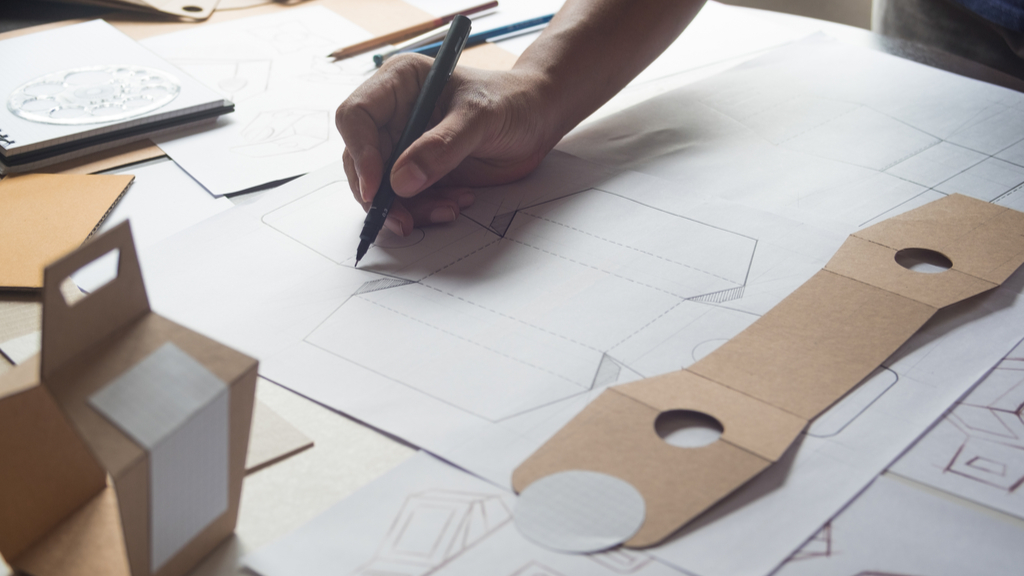
Product packaging is one of the major contributors to pollution around the globe. No matter where you look, you will often see plastic bags, bottles, straws, and everything in between littering our streets, parks, beaches, and oceans.
To combat this, sustainable packaging is a must for businesses. Here are some reasons why it is important, as well as some of the best sustainable packaging solutions around.
Benefits of Sustainable Packaging
Sustainable packaging is important as it will drastically lower how much pollution we spread. Considering how much is bought every day around the world, you begin to get an idea about how much unrecyclable waste is thrown into landfills, into the sea, and burnt.
eCommerce packaging is no different, and since so many people are shopping online, it is an area that needs to make giant steps towards being sustainable. Here are some of the major benefits businesses can achieve.
Better for the Environment
This is a fairly obvious one, but sustainable packaging is better for the environment. There is less waste, more recycling, and less damage to the world around us. A piece of packaging that can be recycled or decays quickly can’t do close to the same damage as a plastic bag or bottle.
Brand Reputation
Being environmentally conscience is great for building brand reputation. More people will want to buy your product if they know you are doing less harm to the world than a competitor, especially nowadays, with more and more people becoming aware of their impact on the environment.
Money-Saver
Sustainable packaging and less packaging go hand in hand. Part of being sustainable is only using enough packaging to protect the content and to save your business money. There is no need over-package a product if you are doing it right.
Better Protection
While this depends on the type of packaging you are using, many sustainable options have proven stronger, sturdier, and more versatile than regular packaging. A great example is a cardboard envelope, far stronger than a plastic bag.
Types of Sustainable Packaging
When it comes to sustainable packaging, there are several options to choose from. However, the five we are going to focus on are optimised cardboard, paper, bio-plastics, and organic packaging.
Optimised
While “optimised” packaging isn’t used to describe a futuristic, environmentally-friendly material, it is instead used to describe a method of packaging. How many times have you bought something small, and it came packaged in a plastic wrap, in a small box, and then small box was wrapped in bubble wrap, and then put in another box?
Overly packaging something like this is one of the main reasons why packaging is part of the pollution problem. Instead, look to package your products using the least amount of material possible and take the time to source packaging that is suitable, instead of filling boxes with bubble wrap and packing peanuts to keep smaller items protected.
Cardboard
Cardboard is one of the best materials to use for sustainable packaging. Not only is it cheap, but it is very strong and durable, versatile enough to be used with almost any product, and can stand up to weather and the elements to some degree.
If you want to take your sustainability efforts even further, recycled cardboard can be used for your packaging too. Don’t forget cardboard can also be used as a way to cushion items, removing the need to use plastic, bubble wrap, or packing peanuts.
Paper
Paper is another stalwart in the sustainable packaging game. While paper can be used for a variety of packaging needs, recycled paper has been shown to be an even better option for both businesses, and customers.
Compared to “virgin” paper, recycled paper uses 70% less energy to produce and also results in 73% less air pollution. While paper doesn’t have the same strength as cardboard, it is absolutely ideal for protecting items inside boxes.
Many companies have also begun using a paper-based tape to seal their boxes and packaging, ensuring that every part of the package can be recycled as it is, with almost zero waste.
Bio-Plastic
There are some instances when it will be unavoidable to use plastic. There are some products that simply need it, as there is nothing else that offers the level of protection plastic offers and that the product needs.
If this is the case, opting for recycled or bio-plastics is the best route you can go. Bio-plastics act in the same way regular plastics do, but many of them can, at the very least, be composted at home.
Organic Packaging
Finally, you can opt for organic packaging. While organic packaging is still in its infancy, there are already a few options available. There is currently a company making aesthetically pleasing and highly versatile packaging out of mushrooms.
While the concept has been around for a while, using hemp and cotton for packaging is also still relatively small-scale. Both have been shown to provide excellent cushioning for products and can be used to create bags that products can be shipped in.